Rongwo Gonpa, other names are Rongwu Gonchen Monastery, Longwu Si which lies at the bank of Rongwu Guchu River in Tongren County which is 180km south of Xinnig and 100km northwest of Labrang Monastery. Rongwo Monastery is the second biggest monastery in Qinghai Province.
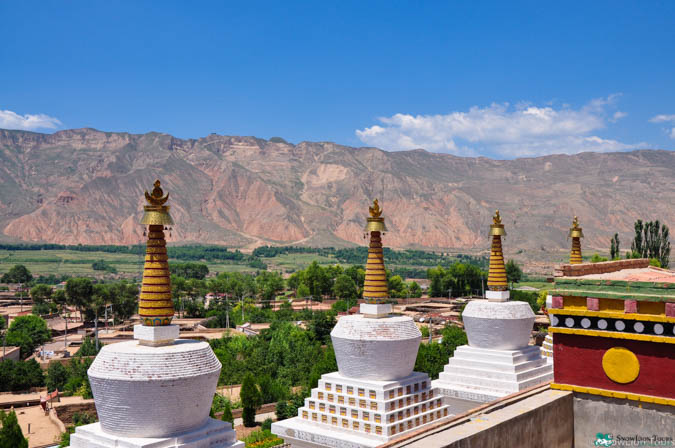
The overlooking view of Rongwo Valley
Rongwo Tosam Namgyel Ling or also called Rongwo Gonchen Monastery is the principal monastery of Rebkong, The original temple was founded in 1301 by the Sakya master Samten Rinchen who was the eldest son of Dodebum, the ruler of Rebkong. Originally a Sakya monastery, it was converted to the Geluk tradition in 1630 by Shar Kelden Gyatso. The complex currently has nine temples and around 600 monks headed by the important incarnated Lamas of Rongwo, The principal tulku is the eighth Shar Kelden Gyatso.
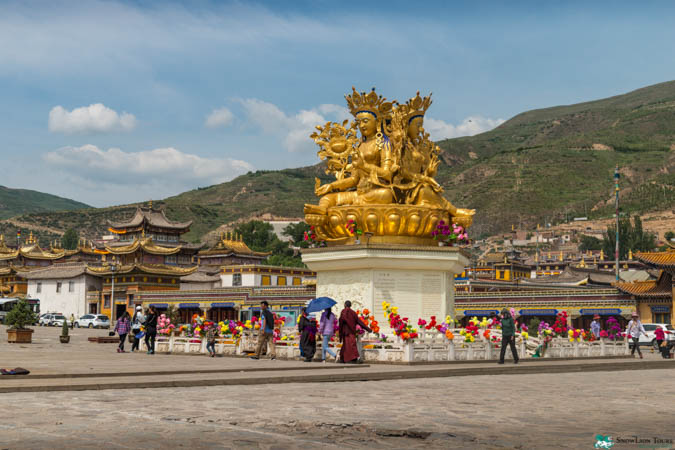
Rongwo Monastery view from Tara Square in Tongren county
There are 35 branch monasteries of Rongwo Gonchen monastery, most of them are in Rebkong county. Rongwo Gonchen has four major colleges, including a meditation hermitage called Drundra Nechok Tashi Kyil. And the others were dialectical colleges known as Dratsang Tosam Namgyeling, which was founded by Shar Kalden Gyatsoin 1630, the tantric college known as Gyudra Sangchen Chokyi Bangzo, which was founded by the second Shartsang Ngawang Trinley Gyatso, and the Kalachakra college known as Dudra Sangak Dargyeling, which was founded in 1773 by the third Shartsang Gendun Trinley Rangye.
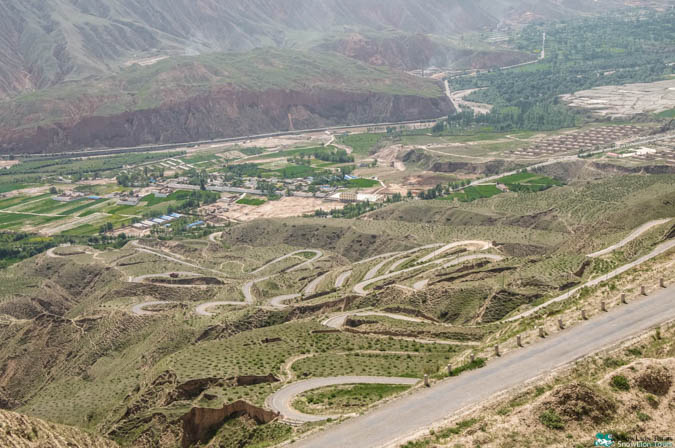
On the way to Tashikyi retreat Center in Rebkong, Amdo Tibet.
Among the recently renovated buildings at Rongwo Gonchen, the great assembly hall is close to the main road just behind the Haryagriva hall. There two other significant temples near the assembly hall are Mipham Chokyi Podrang dedicated to Maitriya and the Dolma Lhakhang to green Tara. The monastic college is situated further to their right.
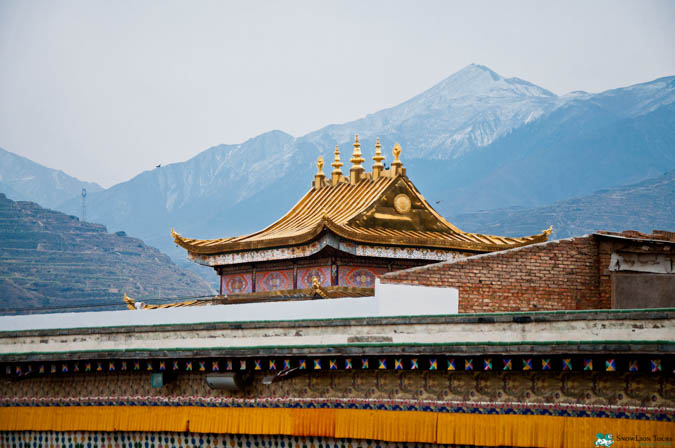
Assembly Hall in Rongwo Monastery.
To the south and slightly uphill from the great assembly hall is the Khardong Chapel, containing the reliquary stupa of the seventh Rongwo Kyabgon Shartsang. The renovated Kalachakra college lies behind it. Far to the right of the Kalachakra college is the Jampeyang Lhakhang with its distinctive roof, it contains an exquisitely fashioned clay image of Manjughosa, which exhibits all the best hallmarks of Rebkong clay sculpture. Above this temple is the Podrang or the residence of the present eighth Rongwo Shar Kelden Gyatso.
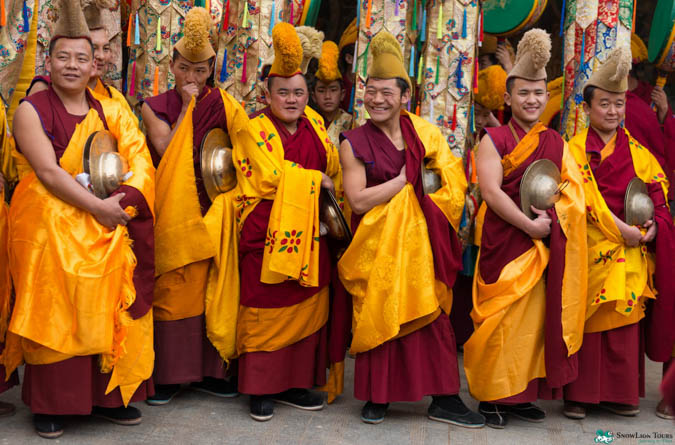
Monks are performing Santrang or Parades in Rongwo Monastery, Amdo Tibet
At its peak, Rongwo monastery had about 2300 monks and 43 incarnate Lamas. The economic source of the monastery were similar to those of any other monastery in Tibet. Income were generated through its estates, patrons, private donations and mortgaging land to the farmers. The monastery was thus also an active agent in the local economy with activities such as loans, trade and other commercial ventures.
The other famous branch monasteries are Gomar Monastery, Upper and lower Wutunsi / Sanggayshung, Nyantok Monastery which are located at the bank of Rongwo Guchu River.
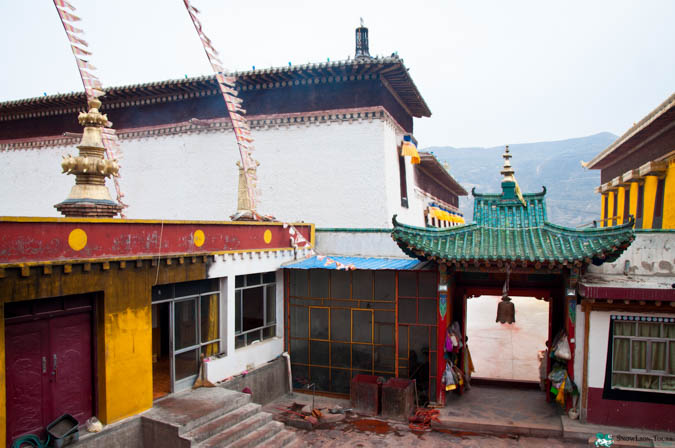
Protector hall in Rongwo Monastery.
The first Rongwo Kyebgon, known as Shar kalden Gyatso (1606-1677) was born in 1606 in Rebkong. He learnt reading and writing from his half-brother Chopa Rinpoche (1581-1659), said to be a reincarnation of Milarepa, the famous 11th century yogi and poet. At the age of eleven, Shar kaldan Gyatso went to central Tibet with his half-brother and studied at Ganden monastery. There, he received the name kaldan Gyatso. After ten years of absence, he returned to Rebkong and planed to lead the life of a hermit. At his request, Shar kaldan Gyatso established the College of Philosophy and became the first abbot of Rongwo monastery. Shar kaldan Gyatso is the most revered and the most popular of all the Shar kaldan incarnations. With Shar kaldan Gyatso as its head, Rongwo monastery became firmly established in the Geluk tradition. The religious teachings he gave all over the region also helped in the spreading of the Geluk tradition in Amdo. Shar kaldan Gyatso lived at a time when Gushri Khan, the Qoshot leader, after defeating the rival tribe led by Chogtu taiji in the mid-1630s, moved his tribe from the north to settle down in the Kokonor area. Although Gushri Khan and his descendants were fervent supporters of the Geluk tradition.
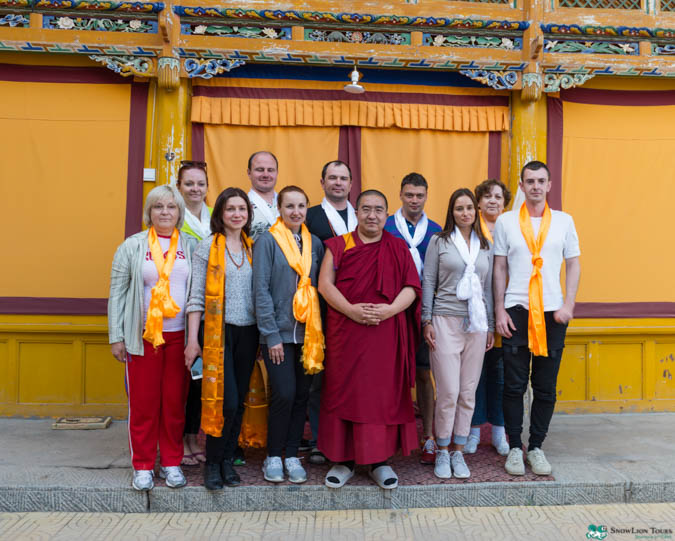
Our group met the 8th Shar Kelden Gyatso, the highest Lama in Rebkong, Amdo.
The second Shar kaldan, , received the title and seal from the 6th Dalai Lama in 1703. At the age of thirty he became the chief religious advisor of the Mongol prince Tsaghan Tenzin and his royal family and received for this recognition a seal and a certificate. In collaboration with the Nangso, at that time, he established in 1732 the Great Prayer Festival (Monlam Chenmo), based on the tradition established in Lhasa in the early 15th century. This was yet another attempt at embedding the Geluk tradition within the religious landscape of Rebkong. The number of villages who in turn were sponsors of the Great Prayer Festival, was established. Later on, the Nangso decided to give a large portion of his share of donations from the Prayer Festival to the Shar kaldan, indicating thus a shift of power from the Nangso to the Shar kaldan reincarnations.
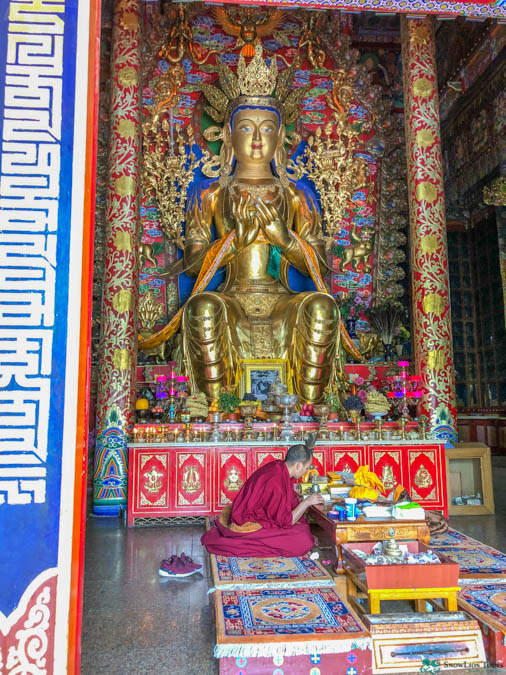
Maitreya or the Future Buddha in Rongwo Monastery.
The third in the Shar kaldan lineage, Gedun Rabgyal (1740-1794), ascended the throne of the monastery at the age of twenty. In 1764, at Gonlung monastery, he met Jangkya Rolpai Dorje, who had come from Beijing to perform ceremonies for his deceased father. The son of Shar kal dan’s nephew was recognised as the third Jamyang Zhadpa(1792-1856), the head of Labrang monastery. The Jamyang Zhadpa from Labrang were a religious and political authority in Amdo and to have the next reincarnation born into one’s own family naturally increased the power and influence of the Shar himself. Likewise, the fourth Shar, Lobsang Gyatso(1795-1843), was born into the family of Jangkya Rolpai Dorje, who was the most influential Lama in the Qing court. The fourth Shar is credited with having enlarged the monastery by adding a library and a chapel for the protectors. A year later, he secured enough money to renovate the Assembly Hall and the courtyard.
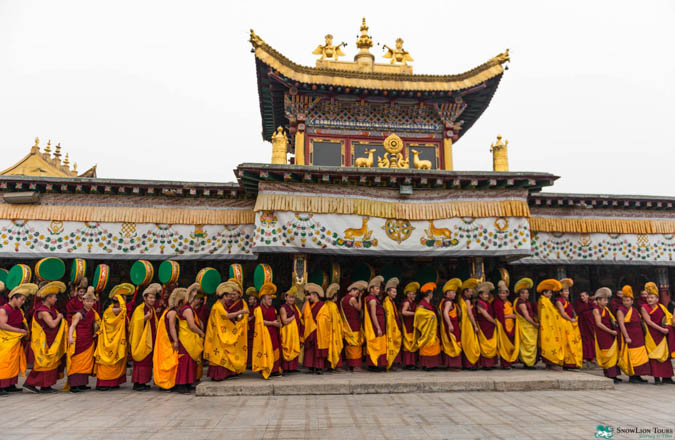
Monks are parading in the courtyard of Rongwo Monastery during a festival.
The majority of the Shar incarnations went to further study in one of the great Geluk monasteries Sera Monastery, Drepung Monastery and Ganden Monastery in central Tibet. Their long journey to central Tibet shows that Rongwo Monastery is tightly connected to the monasteries in central Tibet.
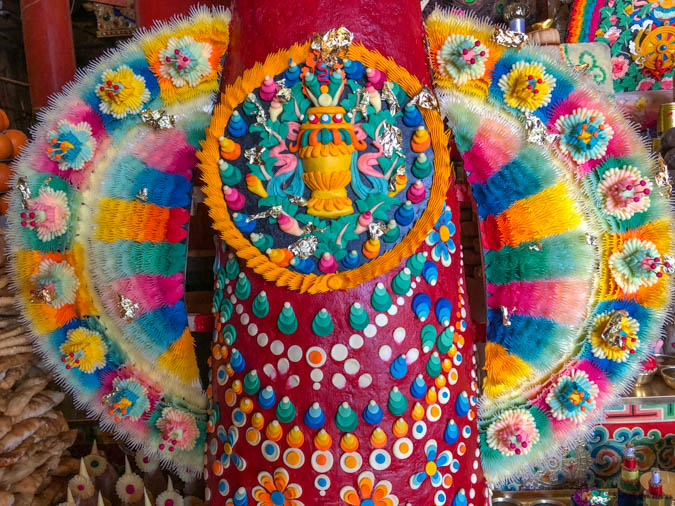
The Butter Sculpture displayed in Rongwo Monastery in Qinghai Province.
Knowns as the heart of the culture center in Rebkong area, there are several festivals hold annually in Rongwo Monastery in Rebkong.
- Monlam Great Prayer Festival which falls in first month of Lunar calendar is the largest religious festival in Rebkong / Tongren, Amdo Tibet. Main activities are Thangka Display, Monks Cham Dance, Rituals.etc.
- Saga Dawa Festival or Summer Great debating Session starts on the 11th of 4th month and ends on 15th of 4th month in lunar calendar.
- Kalachakra Sadhana falls on 15th of 3rd month of lunar calendar. Highlights: Study Kalachakra Mulatantra and perform Kalachakra Sadhana.
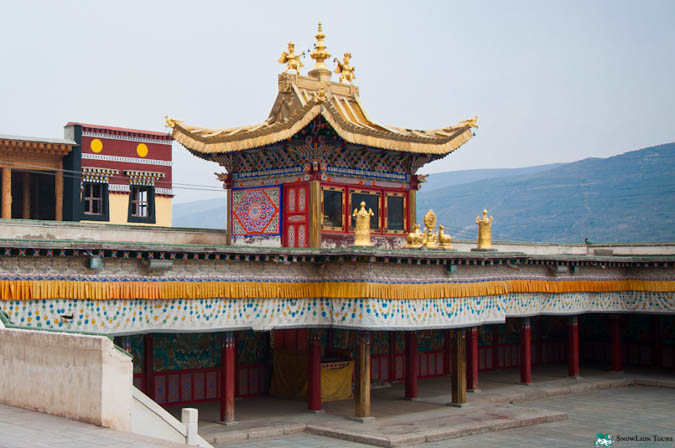
Monks Debating Court in Rongwo Monastery
How to get to Rongwo Monastery:
There are 3 routes to get to Rongwo Monastery and Tongren County.
1ST route is either drive or take a public bus from Xining. This is the easiest and cheapest way. The Bus fee is 40CNY.
2nd route is drive from Labrang Monastery in Gannan Prefecture in Gansu Province. There is no bus but many private cars running on this route.
3rd route is get to Tongren from Zeku County. This is only option if you get to Tongren from Golog Prefecture or Sichuan Province.
The Entrance fee to Rongwo Monastery / Longwu Si is 60Y per person.
Useful links:





